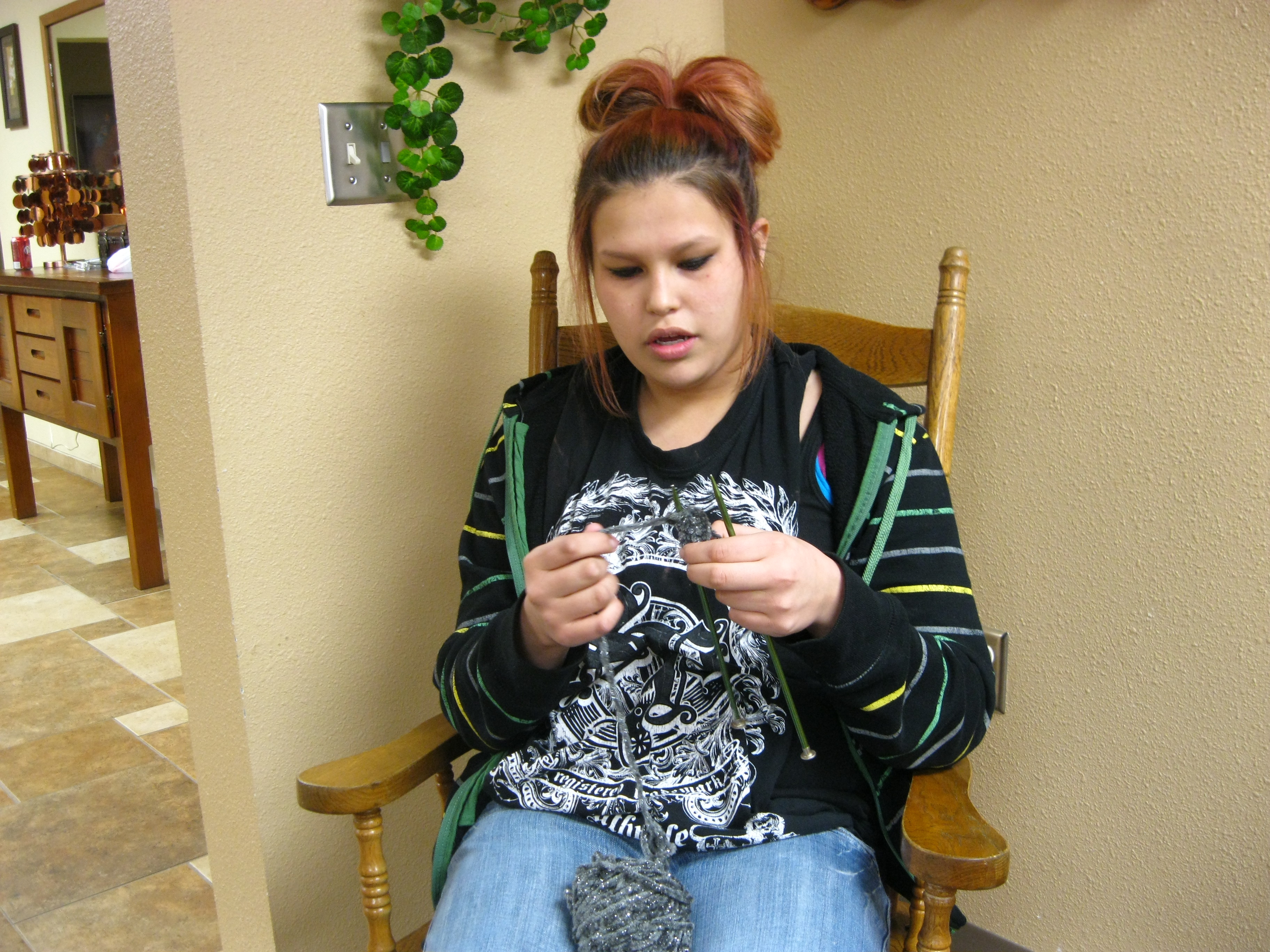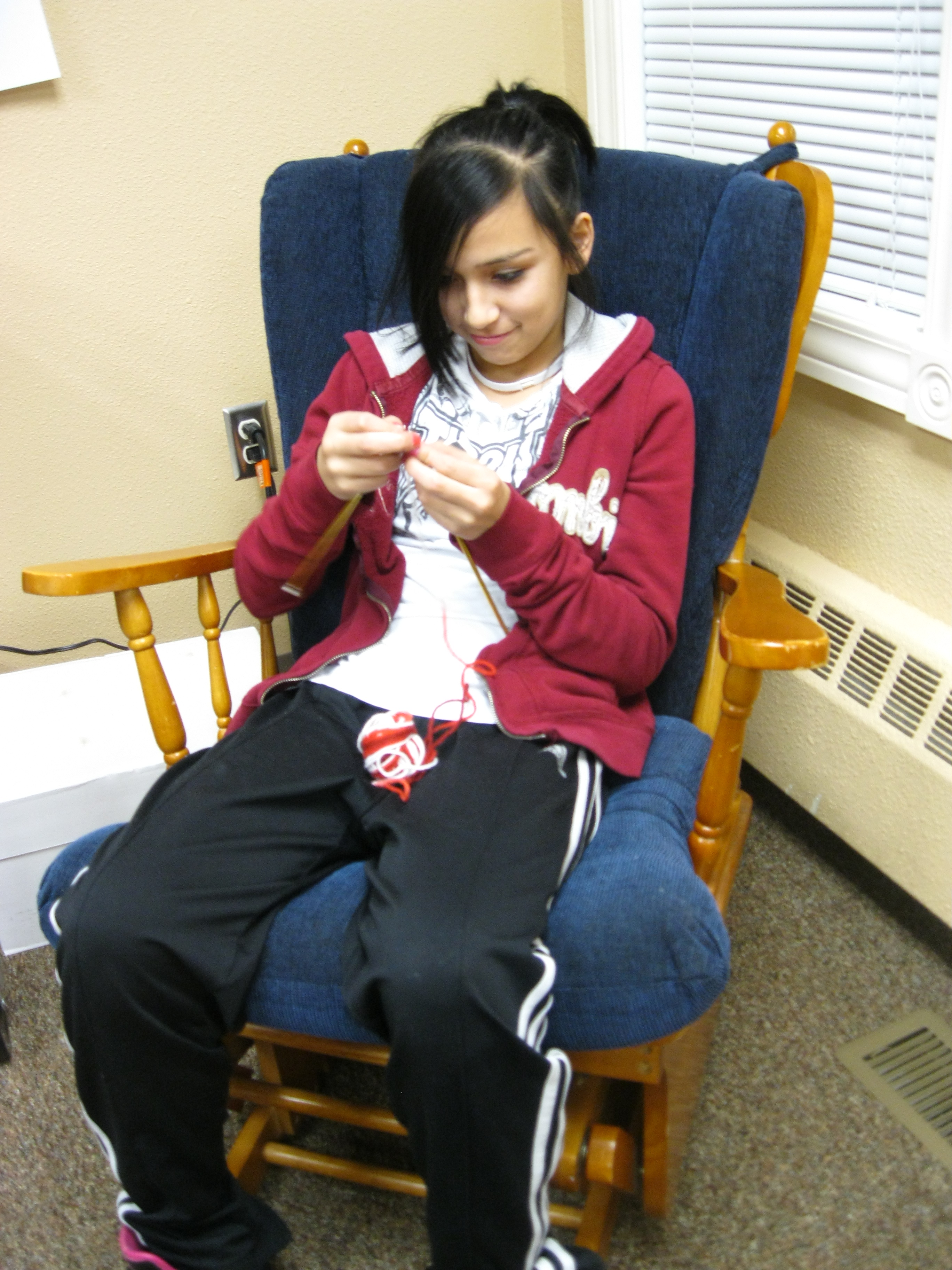
I sometimes hold the mistaken belief that I am teaching something. A few weeks ago, I sat down on the couch with a ball of yarn and my knitting needles, trying to make a cable knit scarf. Within minutes, several girls were sitting with me watching.
“Oooooh! Can you teach me to knit?”
We spent that evening, and many evenings after, sitting in the living room with donated yarn and needles, working on the basics. Knitting usually involves two kinds of stitches—either wrapping the yarn towards or away. Moving back and forth – between towards and away – creates patterns that are both beautiful and elastic. We spent our time focusing on just one direction, repeating it over and over again. The girls were surprised at how fast I could stitch, and I had to remind them that I had many years of practice. They settled in happily with their projects, slowly working their needles.
It turns out that I had a lot to learn from these girls. They had no trouble at all asking for help. Our knitting times were punctuated with,
“Help! I think I messed up! Did I do this right? Can you help me fix this?”
They weren’t always sure what “right” looked like. Often enough, they hadn’t actually made a mistake. We’d look together, count the stitches, examine the loops, and make a few tugs. Then they were right back to work. In order to master a skill, sometimes you have to rely on someone more skillful than yourself to show you the way.
They were also much better at handling unraveling. If they made a big mistake or got tangled up or things fell apart, they happily came back to me with empty needles and a skein and said,
“Can you start me over again?” And again? And again?

Because sometimes the process is much more important than the product. Sometimes we really don’t need to get something “done,” we just need to do it. No need to get attached to an outcome. No need to freak out when that cable pattern gets turned inside out and it can’t be fixed and you have to give up and undo 6 hours of work (ahem). Unraveling is not the end of the world.
And sometimes we don’t need to “do” something as much as we need to be with someone while we’re doing it. If we’re sitting in the living room together – stitching and unraveling, moving towards and away, mastering and forgetting and re-mastering – then the real skill is one of belonging.
In these past few weeks I have learned so much from these girls. They set an example of how to recover from a mistake with grace. Whether on the basketball court, on the playground or in the knitting circle, they demonstrate the power of admitting a mistake and setting it right. They trust their houseparents to hold them accountable, help them course-correct, and then celebrate their success when they get it right. I’ve been inspired at their courage in the face of so much unraveling.
Perhaps the girls will come away from this experience with a scarf or a new hobby. I’m hoping that their time knitting will provide them with a sense of Mastery and Belonging. Learning, after all, will show up in rather unexpected places.
Claire, courtesy of Pinger Home

